Jaisalmer, a mystical city in the state of Rajasthan, is situated on the westernmost frontier of India and rises from the heart of the Thar Desert. Also attributed as the “Golden City of India” owing to the yellow sand and yellow sandstone used in the architecture of the town that gives it a golden look, Jaisalmer is famous all over the world for its palaces and forts of spectacular opulence.
The city covers a total area of 5.1 square kilometers and is located at an altitude of 225 meters above sea level amid the scenic Thar Desert. Jaisalmer was earlier surrounded by an extensive wall but at present nothing remains except the gates and the huge fort, which crowns the city and is considered the soul of Jaisalmer.
Jaisalmer, which was once a sleepy desert city, has transformed itself into one of India’s key tourist destinations as well as claims an important position among the tourist attractions spread all over the desert land of Rajasthan.
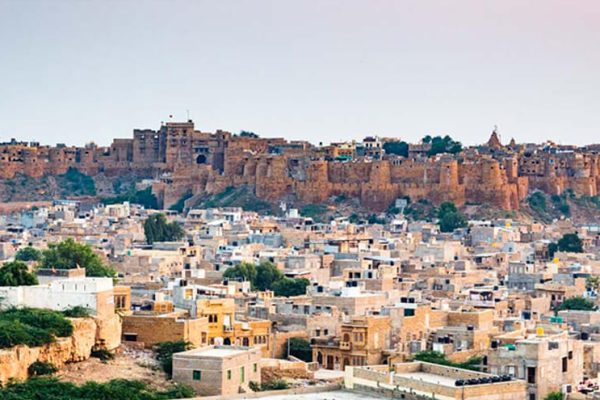
The fort was built in 1156, and is a proud chattel of the Bhati clan. Rawal Jaiswal was the founder of Jaisalmer city, and Jaisalmer fort was built in his reign. It is a 250 foot tall fort, which is protected by 30 feet long walls. The fort constitutes 99 bastions, amongst these 92 were built between 1633 and 1647. One can see the fusion of Islamic and Rajput architecture. There are 4 gateways to reach this fort i.e. Ganesh Pol, Akshya Pol, Suraj Pol and Hawa Pol. Jaisalmer Fort is situated on Trikuta Hill and had been the scene of many battles. The main attractions inside the fort are: Raj Mahal (Royal palace), Jain temples and the Laxminath temple. The fort is made as per the actual Rajasthan standards and feature a city against a red-and-yellow background.

Among all the things that make this city popular, “Patwon Ki Haveli,” also known as the Mansion of Brocade Merchants tops the list.Patwon Ki Haveli is a cluster of five large havelis in Jaisalmer. Built in 1805 by Guman Chand Patwa, it took the workers almost 55 years to complete the first haveli. With an interesting history, Patwon Ki Haveli is actually the first and the largest haveli to be constructed in Jaisalmer. History says that Patwa was an extremely wealthy man and a well-known trader of his time.

Gadsisar Lake was a water conversation tank built in 1400 AD, and was constructed under the reign of Maharwal Gadsi Singh. If a traveller wants to enjoy bird watching on their tour to Jaisalmer, then Gadsisar lake is the right place to be. On the bank of Gadsisar lake one can see a gateway made of yellow sandstones known by the name of Tilon Ki Pol. A Krishna Temple is located by the side of the archway. An interesting fact about the lake is that it never dries as it gets continuous water supply from the Indira Gandhi Canal. One can enjoy a calm and smoothing boat ride on this lake. Gadsisar Lake is home to multiple variants of catfishes as well.

Nathmal Ki Haveli, built in the 19th century, is one of the famous tourist places in Jaisalmer. Nathmalji ki Haveli was the residence of Diwan Mohta Nathmal, the Prime Minister of Jaisalmer, and was built in yellow sandstone in Jaisalmer. The architects of this mansion were two brothers, Hathi and Lulu. The most interesting fact about it is that all its artworks are made by a jeweler.
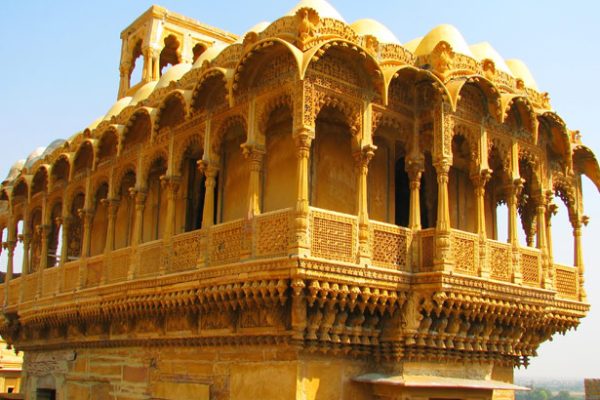
Salim Singh Ki Haveli was built in 1815 by Salim Singh, the prime minister of the kingdom when Jaisalmer was the capital. This mansion was not created with the help of cements and mortar- the stones are connected with strong iron rods. This mansion is famous for its distinctive architecture as it is constitutes 38 gracefully carved balconies. The architecture of this mansion is inspired by dancing peacock. One of the most ambitious constructions of its times, the Haveli is so magnificent, that it even invited the ruler's envy during its era.

The Government Museum, located in the far western side of Jaisalmer Fort, is a conceptualization of the Department of Archeology and Museum and was opened to the public on 19th February, 1984. The museum has put on display wooden and marine fossils of the wildlife of the neighboring areas, with few of the display being as old as 150 million years. The fossils are significant indicators of the region’s geological history and hold an extremely important place from a scientific viewpoint. Another key attraction of the Government Museum is the several 12th-century sculptures from the historical townships of Kiradu and Lodurva. All the displays are well captioned in different languages so that all kinds of tourists find it easy to know about the exhibits in detail. The Government Museum homes nearly 72 enchanting stone sculptures, 65 ancient coins, 13 old paintings, 8 rare inscriptions and hundreds of delicately embroidered dresses.

The Mandir palace is over two centuries old with the foundation stone being laid by MaharawalMoolrajji of the Singh Dynasty. The palace was built in parts by his subsequent successors till the beginning of the 20th century; the latest and most beautiful part of the building was constructed by the late MahahrawalJawahirSingh and is called The Jawahir Vilas. The Mandir Palace is well known for its architectural style which is Indo- Saracen. This particular style is a blend of the Rajput and Islamic architectural forms which were carried down by the artist from Afghanistan. The Mandir Palace also has some excellent stone carvings which are showcased in their ornate balconies, carved stone screens and canopies. The exquisite carvings are proof of the excellent local craftsmanship in their finest and purest form. Another interesting feature of the The Mandir Palace is its tower called The Badal Vilas, which is the tallest tower below the Golden City Fort. The tower provides an excellent view of the city and one must take the time to visit the tower.

The Jain Temples located inside the Jaisalmer Fort date back to the 12th and 15th centuries. The temples are dedicated to Rikhabdevji and Shambhavdevji, famous Jain hermits known as 'Tirthankars' (wise teachers who taught people how to attain nirvana). Like all other structures in Jaisalmer, the temples are carved out of yellow sandstone. They have been built in the famed Dilwara style which is known for its beautiful architecture.
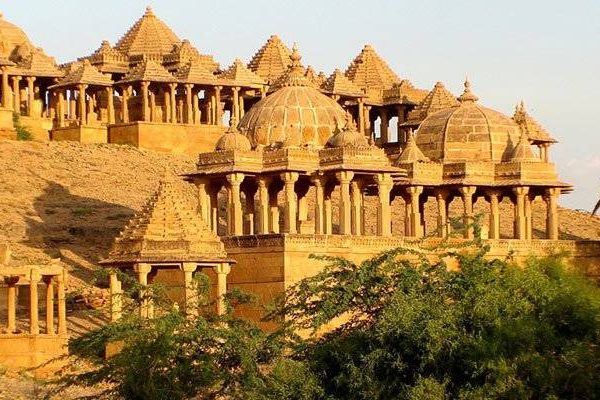
Bada Bagh means big garden. It is a garden of cenotaphs or chhatris of the royal family of Jaisalmer. A descendant of Maharawal Jaisal Singh, Jait Singh II, commissioned a dam to create a water tank in the 16th century AD. This made the desert green in this area. After his death, Bada Bagh was fully developed by his son Lunakaran.
The garden stands at the foot of a hill and several chhatris or cenotaphs stand in memory of the late rulers of Jaisalmer. Cenotaphs are also known as chhatris and one cenotaph is erected for each ruler. The cenotaph of Maharawal Jait Singh is the oldest of all. Many cenotaphs were built by subsequent rulers for the Bhatti royal family of Jaisalmer. This continued till the 20th century when the last one for Maharawal Jawahar Singh was left incomplete as his son who ascended the throne after him, died within one year of his ascension. This was considered to be bad luck and from then on, the tradition of cenotaphs at Bada Bagh was discontinued.
This garden also includes a tank and a dam, along with a Govardhan Stambh (pillar). The pillar was constructed for commemorating the construction of the nearby tank and dam. Locals refer to the dam as Jait Bandh, while the tank is known as Jait Sar. The Jait Bandh is a huge structure measuring over 1,200 feet in length and 350 feet in width. Both the tank and dam has been constructed using solid blocks of stone.

Desert National Park is located in the Thar Desert Jaisalmer of Rajasthan. It is 12 km from Jaisalmer district. Desert National Park is not only the largest park in the state but there is no equivalent national park in India. The total area of the park is 3162 square kilometers. A large part of the park is filled with faded salt lakes and thorny bushes. Along with this, there is also an abundance of sand dunes. The most special thing about this park is that the park is endless to see and covers a vast area extending from the Indo-Pakistan border to . Desert National Park is located close to the Thar Desert and despite its ecosystem being hard and fragile, birds of this park are found only in very few. Home to the black buck, chinkara, desert fox, sand grouse, blue bull, desert gerbil etc. – it is a place to explore nature’s creation at its very best. The endangered Great Indian Bustard can also be spotted here and during the winter months, it becomes the abode of migratory birds like the Saker Falcon, Eastern Imperial Eagle, Eurasian and Himalayan Griffon Vultures.

The underlying history of Kuldhara has piqued the curiosity of one visitor too many, and makes it one of the most enigmatic destinations to visit in Jaisalmer, Rajasthan. The story has a beautiful daughter, an unscrupulous minister, scared villagers, an exodus in the middle of the night, and no idea where the villagers vanished. This is not the story of a movie, but the unfathomable legend that lies behind the abandoned village of Kuldhara. Located about 18 km from the city of Jaisalmer is this old town that was abandoned by its villagers in the 1800s. It was like the entire town vanished in the course of a single night. With about 85 villages full of people, it remains a mystery as to how no one saw them leave; in fact, even to this date, no one knows where all of them went either. The village remains uninhabited to the day, in the same state that the villagers had left it, hundreds of years ago. The location has become a major tourist destination as people from all over the world travel here to revel in the mysteries of the past. The desolate outline of Kuldhara etches a story in front of your eyes, if you are keen enough to read it!
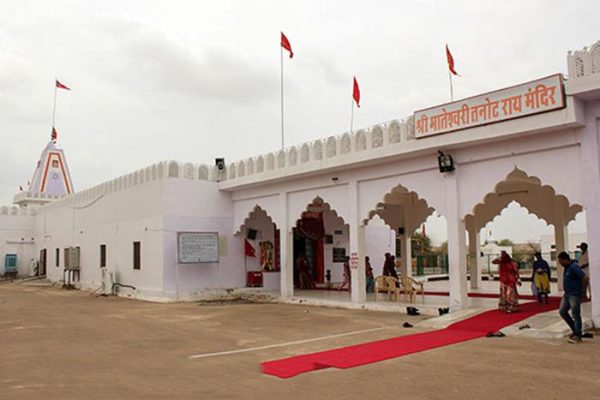
Some 120 kilometres away from Jaisalmer is the Tanot Mata Temple. Tanot Mata is considered to be a reincarnation of Goddess Hinglaj. There are many stories of how during the 1965 India-Pakistan war, Tanot was under heavy attack and shelling. However, none of the shells or bombs fired at the temple exploded. This reaffirmed people’s faith that Goddess the temple. Post the war, the Border Security Force (BSF) rebuilt the temple and today, the temple is managed by a BSF Trust.
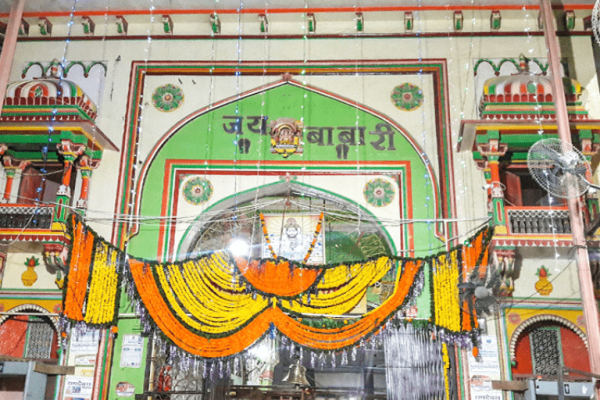
Located 12 kilometres from Pokhran on the Jodhpur – Jaisalmer route lies Ramdevra Temple. While most people assume it is a temple dedicated Lord Ram, it is in fact, dedicated to renowned saint Baba Ramdevji. The temple marks the eternal resting place of Baba Ramdevji and is visited by people of all faiths. Between August and September, a large fair known as Ramdevra Fair is held here, and it attracts large numbers of devotees who sing devotional songs all night long.
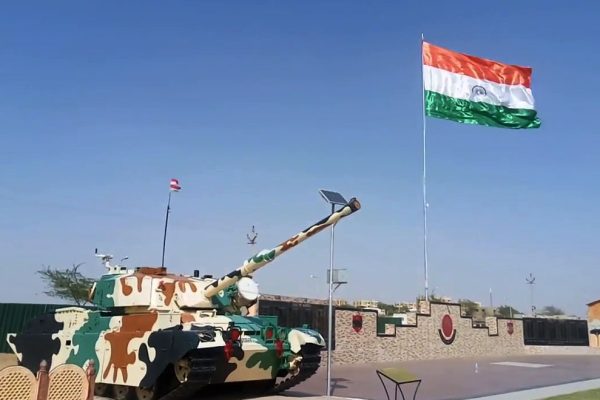
“If you ate today, thank a farmer, and if you ate in peace, thank a soldier!” Our military and defense forces spend their days facing perils and hardships, so the citizens of India can sleep peacefully. While we all appreciate and hold respect for all they do for us, the Indian Army has commemorated the sacrifices of their soldiers in a beautiful display at this war museum, situated at the Jaisalmer military base. This exhibit is primarily to pay respect to all the soldiers who took part and lost their lives in the 1965 India-Pakistan war and the 1971 Longewala battle. A visit to this museum lets you see a number of captured tanks and other memorabilia from the battle, instilling a sense of immense pride in your country and its soldiers. The museum also features an audio-visual room where they screen movies about the battle. You can also see an interview with Major Kuldip Singh Chandpuri who was a crucial part of the Longewala battle. In the video, he gives a detailed description of how the soldiers fought the Longewala battle. The museum also has a war memorial replete with many war trophies and vintage equipment, along with tanks, guns, and military vehicles, murals of soldiers who lost their lives in the war, and weapons which were used during the same. Even the Air Force has given a Hunter aircraft, which was used during the Battle of Longewala in the 1971 Indo-Pak War, as a present to the museum. Located on the Jaisalmer-Jodhpur Highway, the museum has free entry, and holds a very important part of our country’s history. It is truly one of the places that you cannot afford to miss.
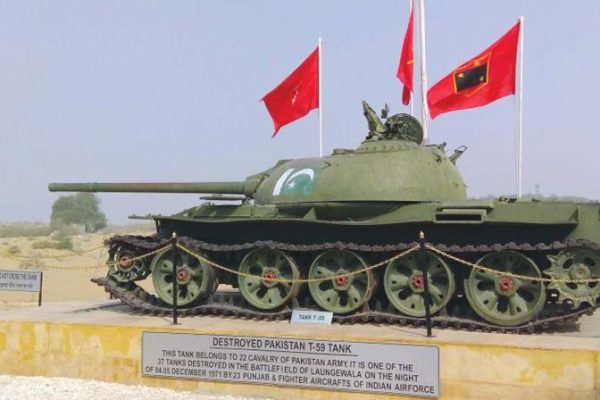
One of the first major engagements in the Western sector during the Indo Pakistani War of 1971, the Battle of Laungewala is an inspiring tale of courage in the face of unconquerable odds. A shining example of the courage, bravery, and valor of the Indian soldiers, the Battle of Laungewala created history on 4 December, 1971, when about a hundred Indian defenders halted the advancing troops of about 2000 Pakistani soldiers and 60 tanks. To celebrate the grit and steely resolve of the Indian soldiers who stalled Pakistani forces from their aim of cutting deep into the Indian Territory, the Desert Corps at Laungewala have constructed the Laungewala Was Memorial. An inspiring destination, this war memorial commemorates the valor and the supreme sacrifice of our brave soldiers, instilling in you a sense of pride when you visit this site
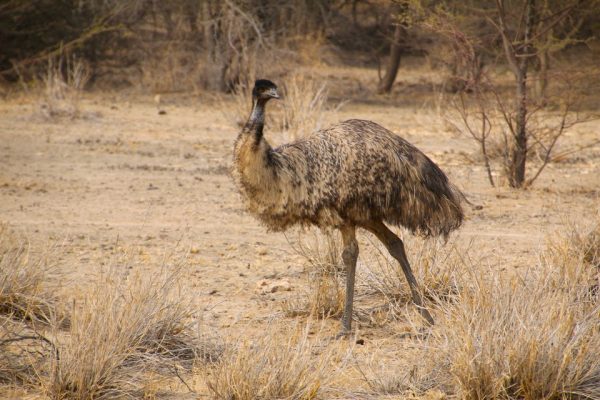
Rajasthan is a treasure trove of history and historical artifacts, but one place in particular takes you beyond the ‘timeline of present’, right into the prehistoric Jurassic era. The Akal Wood Fossil Park is a 21-hectare preserved area that lies about 17 km from Jaisalmer, towards Barmer.180 million years ago, a forest used to stand where the park is today. The area was then submersed into the sea and the tree trunks were preserved in the form of fossils. With remnants of fallen and broken logs that date back to the pre-historic times, the park is an absolute must-visit attraction. Here, you can see large fossilized trunks from trees of different sizes that have been placed in corrugated iron shelters. There are about 25 numb trees, along with centuries-old fossils, and right at the entrance, you can also stroke a fossil of an ancient red-wood tree trunk. In the geological area that had only non-flowering trees, an entire forest comprising of huge trees was fossilized. The presence of these gigantic trees suggests that in the lower Jurassic age, the area had hot and humid climate that was able to support a luxuriant forest, as compared to the stark dry climate of today.

Located in Bada Bagh in Jaisalmer, Vyas Chhatri is one of the most beautiful examples of Rajasthani architecture. This old Brahmin cemetery, full of local versions of cenotaphs, is dedicated to Ved Vyaas, the sage who wrote the epic, Mahabharata. Filled with cenotaphs all throughout, this place is more popularly referred to as the sunset point of Jaisalmer. Every evening, hordes of people visit the Vyas Chhatri to get a glimpse of the beautiful desert sunset. Everywhere around here you can see beautiful golden sandstone chhatris that are covered in intricate and delicate carvings. A popular destination among tourists, Vyas Chhatri offers a bird’s eye view of Jaisalmer, the fort, and even the adjoining areas. Visitors can also witness a number of locals at Vyas Chhatri, playing Rajasthani tunes on the algoza, a double fluted instrument, making it an experience that astounds the senses.

Amar Sagar Lake, located about 7 km towards the western outskirts of Jaisalmer, is a lake cum oasis lying adjacent to the Amar Singh Palace. The palace itself was built in the 17 th century. The complex that includes the palace and the lake is also home to several ponds and wells, along with an old temple dedicated to Lord Shiva. Numerous figureheads of animals carved in stone surround the lake, and according to legends, these carved figureheads are supposed to be protectors of the royal family. At one end, there are pavilions with stairs that lead down to the lake; while at the other end is a beautiful, aesthetically carved Jain temple. A peaceful and tranquil place, the Amar Sagar Lake is yet another spot in Jaisalmer where you have an opportunity to watch a gorgeous sunset.